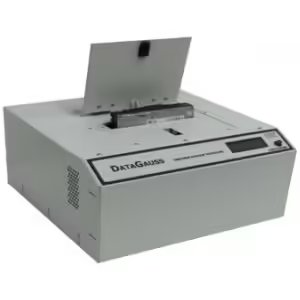The Importance of Data Sanitisation

Due to the massive amount of
information that is collected and stored in today’s society, data sanitisation
is a vital aspect of ensuring that it is not recoverable. This process involves
permanently wiping all traces of data from various electronic devices and
storage media. Not following proper data sanitisation procedures can lead to
various issues, such as identity theft and data breaches. Due to the existence
of regulations such as the POPIA and GDPR, companies can be fined for not
protecting sensitive information.
This article aims to explain the
importance of data sanitisation and how it can affect the security of our
information.
What is Data Sanitisation and
why is it so important?
The process of data sanitisation
involves permanently wiping the data from various types of storage media and
devices. It’s important to protect sensitive information from getting lost or
stolen, which can occur when an individual disposes of their old equipment or
recycles it.
There are various types of
techniques that can be used during the data sanitisation process. One of these
is overwriting, which involves erasing the original data by writing new
information over it using a software known as BitRaser. Another method of
erasing data is degaussing, which involves exposing the device to a magnetic
field. Physical damage can be done to the storage media by either crushing,
shredding, or melting it completely.
Here are some of the key points
as to why data sanitisation is important:
- Environmental impact: Due to the increasing amount of
electronic waste, it’s important that the proper disposal of these
materials is carried out. Data sanitisation plays a vital role in this process,
as it ensures the secure destruction of sensitive data before it can be
reused or recycled.
- Privacy concerns: The privacy of individuals’ information
can be threatened by the unauthorised access and use of their
Identification numbers, names, and addresses. By removing this
information, data sanitisation can help safeguard people’s privacy.
- Protection against Data breaches: The consequences of a data breach can be
severe for both the company and the individual affected by it. Having the
proper data sanitisation procedures can help minimise the risk of a major
incident.
- Compliance regulation: Most companies follow laws that mandate
the proper storage and handling of sensitive information. These laws
include the requirements of the Health Insurance Portability and
Accountability Act of 1996 (HIPAA), the General Data Protection Regulation
(GDPR), and the Protection of Personal Information Act (POPI Act).
Violators of these regulations can face financial and legal consequences.
- Risk of Data leakage: Even if the data is not intentionally
transmitted, it can still be accidentally released or made available to
the public due to various factors such as human error or system failure.
Having the proper data protection procedures can help prevent data
leakage.
Data sanitisation is there for a
vital part of ensuring that organisations and individuals’ privacy and security
is protected. It is also an essential part of managing and securing their
information.
There are various techniques that can be used to perform data sanitisation.
Different techniques have varying levels of effectiveness. Some of the most common data sanitisation methods are:
1. Physical destruction: Physical destruction is a method commonly used to wipe out the media that holds data. Although this method can prevent it from being recovered, it can be very costly and can be very harmful to the environment..

2. Data Erasure Software: One of the most common methods that can be used to prevent data from being recovered is by overwriting the media. This method involves adding random characters or zeroes to the data to make it impossible to retrieve the original data. This can be performed with the help of a certified and professional software known as BitRaser.

3. Degaussing: Data destruction is carried out by degaussing, which involves neutralising or demagnetising the magnetic field found in various types of storage media. This method can effectively destroy both the device and the data.

4. Cryptographic Erasure: A media sanitisation technique known as cryptographic erase involves altering or wiping the media encryption key of an SSD, which is present in modern SSDs. But this method cannot be used on areas that are unencrypted, such as pre-boot apps.
When choosing data sanitisation techniques, it is important to consider the level of security that is required and the sensitivity of the data that is being sanitised. A combination of these techniques is needed to achieve the ideal level of protection.
In Conclusion
Due to the increasing number of breaches and cyberattacks happening in today’s world, it is important that organisations and individuals regularly perform data sanitisation. This process is performed to protect the sensitive information that they have stored. It helps prevent it from being stolen and used by unauthorised individuals.
